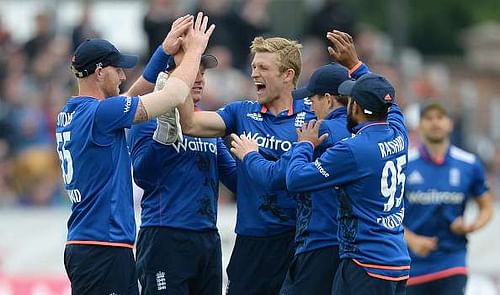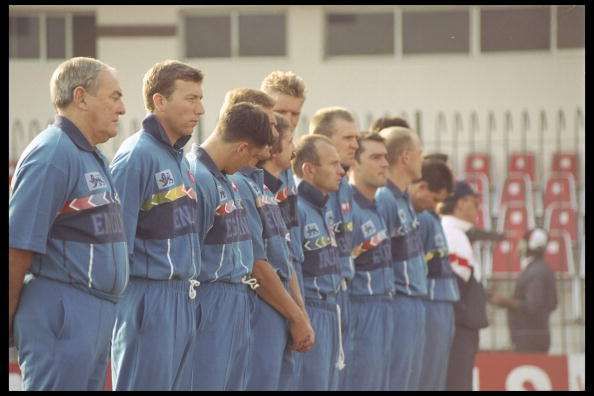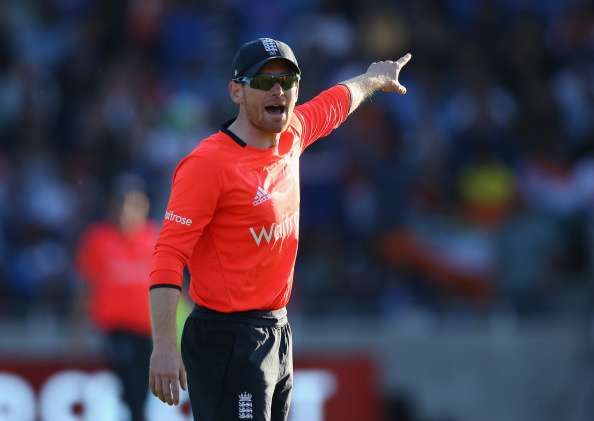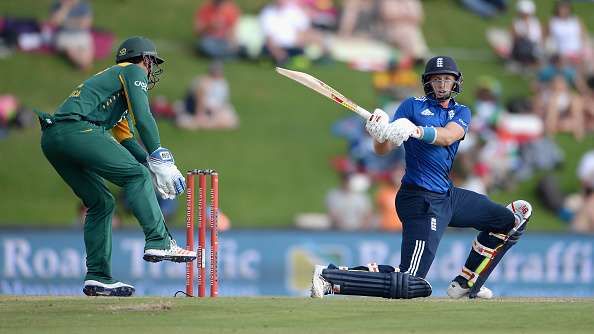
Flair, consistency and aggression - England's young ODI team
Since the 2015 World Cup in March, England have scored 350 and above on more than eight occasions, whereas in the last 44 years, they had done it just twice. Staggering stat, isn’t it? After the 2015 World Cup, they have won five out of eight ODI tournaments and have lost the other three only by a margin of one game.
Since 1990, the recently concluded series against India was the first England ODI team touring India who were considered as serious contenders to upset the home team and they did not disappoint. They could not achieve a result in the series but they ran India close.
England's ODI dilemmas in the past
For long, England have been considered as pushovers in the shorter format, irrespective of the conditions they have played in. For a country which has a rich history in cricket with a very loyal and passionate fan base, one of the strongest domestic structures, and never short of talent, they’ve not won too many major trophies.
The mindset with which their players, selectors and officials have approached the format has always been ten years behind their time.
Post the 1992 World Cup in Australia, where for the third time they failed to win the biggest trophy in ODI cricket, the limited-overs England team has been on a downward slide. Batsmen and bowlers playing both in the Test and ODI team, bits and pieces all-rounders, batsmen who would struggle to score centuries, bowlers who could restrict totals but not pick wickets, formed the crux of their team composition.
From the mid-90s to mid-2000s, when other teams were producing mavericks like Jayasuriya, Afridi and Klusener, England continued to rely on its traditionalists and nudgers to take the mantle of ODI team forward. They believed that batsmen with a strong forward defence technique were a more reliable ODI prospect than those who could play a reverse sweep or a scoop.
They did not possess enough ammunition to post or chase big totals. If you dig into the stats, you will find that their only notable ODI series win came in 1997 in Sharjah. On slow pitches where shot-making was difficult, slower bowlers like Mark Ealham were effective and the average score was just around 230.
Surprisingly, the England T20 team has been on the up. The England Cricket Board has been very proactive and successful in drawing the line between T20 and other formats. They have been appreciative of the fact that T20 format is distinctly different and requires a different kind of player with a leader who has a T20 specific mindset, different ideologies and diverse style of play.
Unsurprisingly, it did not take England long to win their first T20 title in 2010 but are yet to win a 50-over World Cup.
A tryst with history
There is a deep-rooted connection between England’s 200 years old history and the way the game was being run in the 90s and 2000s.
Back in the 18th century, the game was run by middle-class and upper-class gentlemen, the product of public school systems in England, who were taught to play “correctly” in a very aesthetic manner and looked at cricket as not only as a sport but also as a test of moral character.
When the MCC was set up, it comprised of a group of gentlemen who were given the task of laying the foundation for this sport. “Traditions” and “Class” had a deep-rooted hold on English cricket set-up and as a result, the “gentleman” style of play prevailed for a very long time.
For long, the British had been the colonial masters of many top cricketing nations. When other teams once part of the British Empire, including West Indies and India, started playing more attractive and an entertaining brand of cricket, England found it difficult to adapt to the new direction of the game.
When ODI cricket was speeding up in the 80s and 90’s, they were too stubborn to change their structure and style. The mere fact that England have managed to score 300-plus on just 44 occasions (till World Cup 2015) whereas India and Australia have scored it 86 times supports the point.
Their T20 success, on the other hand, can be attributed to their very flexible and modern structure.
Beginning of an era of optimism and hope
The 2015 World Cup defeat against Bangladesh was a much-needed wake-up call. After the series defeat against Sri Lanka in December 2014, Alastair Cook made way for Eoin Morgan.
Morgan, an aggressive middle-order batsman, was brought up in Ireland which has played only ODIs and are yet to play their first official Test match. His belief and imagination is not scarred by the failure or success of previous English ODI teams.
It is interesting to see how some players adapt to one format better than the other. MS Dhoni, for example, understands the format better than other players in the team. Just like Dhoni, the Irish-born English captain has brought a belief and fearless attitude which has resulted in a major overhaul of the team structure with youth and aggression preferred over stability and technique.
The fact that the board is being run by Andrew Strauss, a former England captain, has also helped him in instilling a very fearless and free-spirited culture in the team. He has been very supportive of players participating in T20 leagues, including the IPL and Big Bash, to improve their games in shorter formats.
For the first time, the England ODI team have all bases covered. The aggressive yet reliable opening pair of Hales and Roy, a champion middle-order batsman to anchor the innings in the form of Root, a genuine fast-bowling all-rounder in Stokes, a useful spin-bowling all-rounder like Moeen Ali, and a very destructive wicketkeeper-batsman who can win you matches on his own by the name of Jos Butler. This team has 7 match winners who can perform in diverse conditions and can compete against the best.
The top 6 of the current team have an average strike rate of 98.42 and scores a century every 15th game, whereas the top 6 in the 2011 team had an average strike rate of just 78.41 and scored a century every 30th game. This team can chase 300 on a consistent basis.
In the 2015 home season against New Zealand, England had staggering scores of 408, 350, 365 and 302 in first four one-day international matches, and last year, on 30th August 2016, they managed to break the world record for the highest team score when they scored 444 against Pakistan in Nottingham. Scoring over 400 twice in the last two years is not a small feat. Flair, consistency, aggression and a “never give up” attitude has been the defining characteristics of this team.
The next World Cup will be played in England in 2019 and that will be the best opportunity, and arguably the best ODI team that England has ever fielded. England fans need not just hope but can strongly believe that this ODI side is capable of achieving things that their predecessors could not even dream of.
Disclaimer: The views expressed in this article are those of the author and they do not necessarily represent the views of Sportskeeda.



